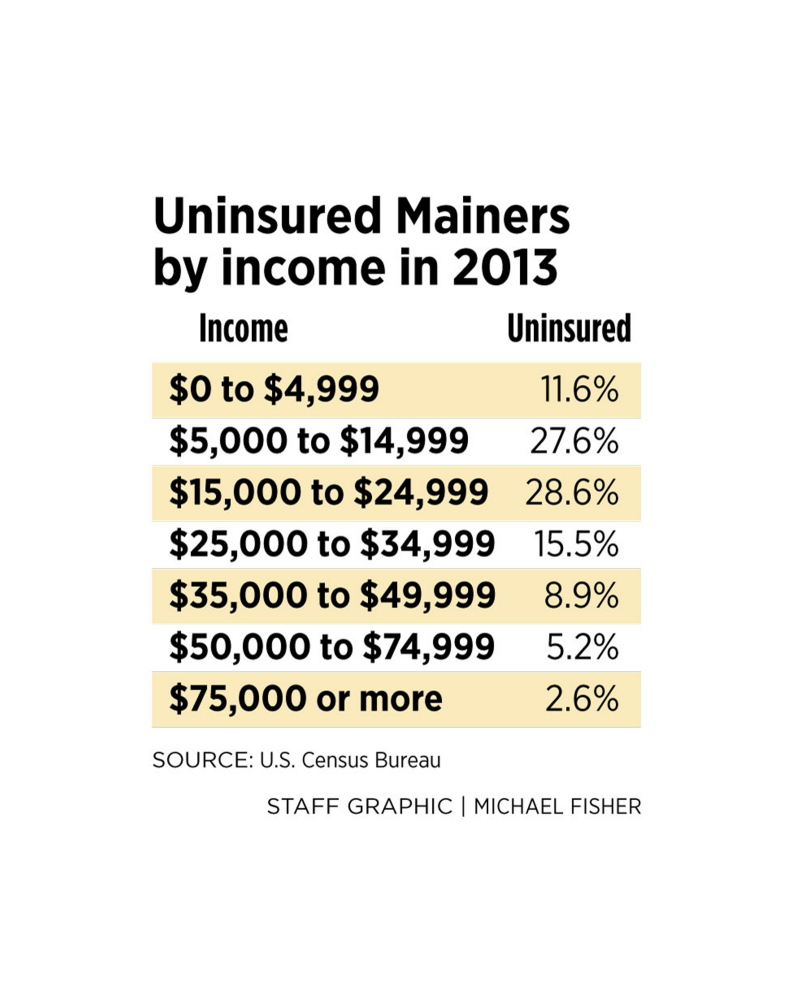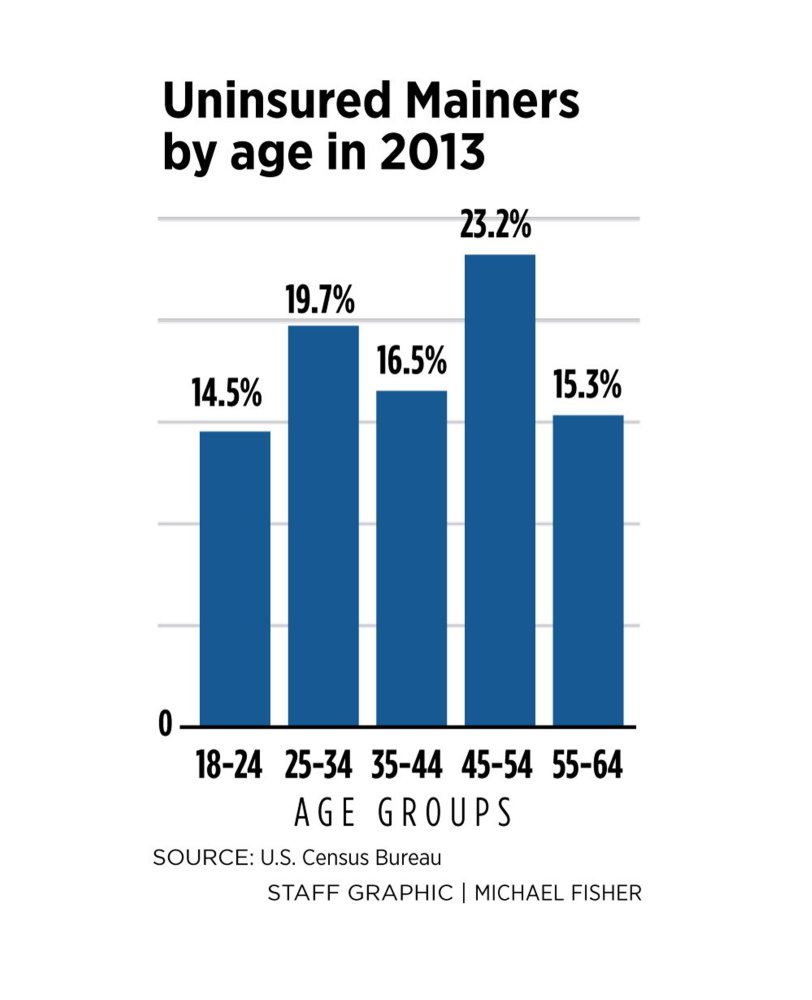New data released Thursday by the U.S. Census Bureau offers details about Mainers who lack health insurance, but does not make clear why Maine was one of only two states to see an increase in the number of uninsured residents in 2013.
Maine’s uninsured increased by 12,000 last year, a 9 percent increase that brought the total number of residents without insurance to 147,000, or 11.2 percent of the state’s population.
After a quick analysis, two health care experts speculated that the increase was likely related to Gov. Paul LePage’s successful effort in 2012 to remove 30,000 people from MaineCare, the state’s version of the Medicaid program.
Mitchell Stein, an independent health policy analyst in Maine, cited a 4.8 percent increase in the uninsured rate among residents who earn 150 percent to 199 percent of the federal poverty level – $17,235 to $22,980 a year. Those who lost MaineCare coverage likely would have fallen into that category.
“We are seeing the harm that came as a result of that law,” Stein said. “To me, that makes sense. It fits with something that happened and we would expect to see and this data confirms it.”
The new data is contained in the latest estimates from the U.S. Census Bureau’s American Community Survey. Earlier this week, the bureau released figures showing that Maine’s uninsured rate increased by 9 percent last year. Maine and New Jersey were the only states to see an increase in 2013. Nationally, the number of uninsured people dropped by 2 percent.
Health experts cautioned against drawing firm conclusions from the data released by the bureau, which only surveyed about 5 percent of Maine’s households and has a 4.9 percent margin of error – a margin that increases among each subset of the population.
“These may not be real findings, because the data is so small,” said Tricia Riley, a senior fellow and adjunct professor of health at the University of Southern Maine’s Muskie School of Public Service.
The data does not reflect health coverage sign-ups under the Affordable Care Act, which took effect in 2014. But it does provide some insight into which groups of Mainers are most likely to lack health insurance.
According to the census estimates, 23 percent of the uninsured are aged 45 to 54.
Riley attributed that high percentage to a state law that removed 14,000 people, primarily childless adults, from the MaineCare rolls in 2013.
“With childless adults, everyone focused on the younger childless adults, but there was a significant number of them who were older,” she said.
Estimates also show that 56.2 percent of those without insurance are men. That’s because women with incomes up to 200 percent of the federal poverty level who are pregnant or have children still qualify for MaineCare, according to Andrea Irwin, legal and policy director for the Consumers for Affordable Health Care, a nonprofit that at one time received a federal contract through the ACA.
The median age of Maine’s uninsured was 38.6 years old – 80 percent held jobs. Those employed in retail and construction sectors, as well as the arts, entertainment, recreation, accommodation and food services sector, had the highest uninsured rates at 16.3 percent, 15 percent and 15.7 percent respectively.
Forty-eight percent of those without insurance had only up to a high school diploma or equivalent, while 34 percent had some college or an associate degree.
Those with a bachelor’s degree or higher accounted for 13.9 percent of the uninsured.
Send questions/comments to the editors.




